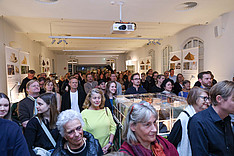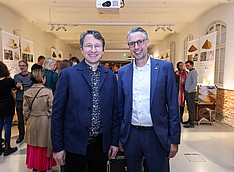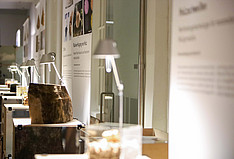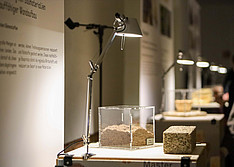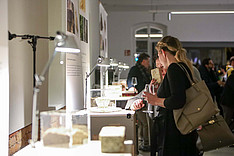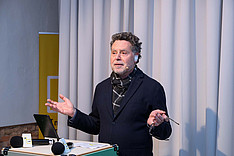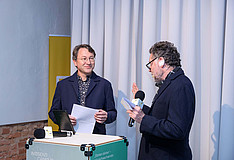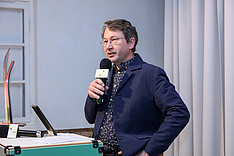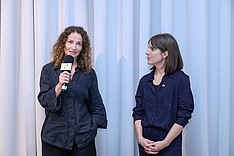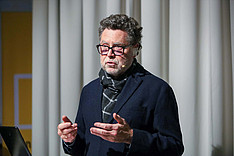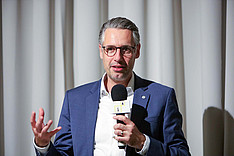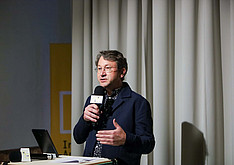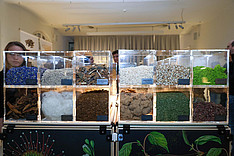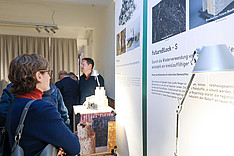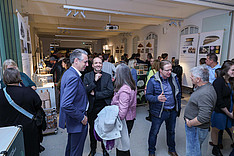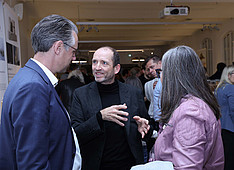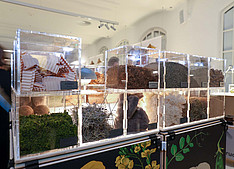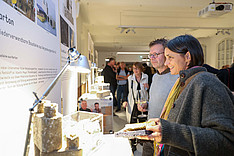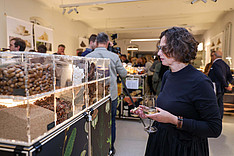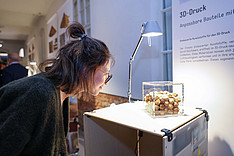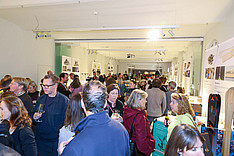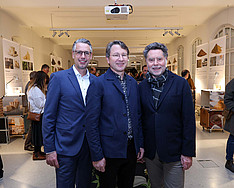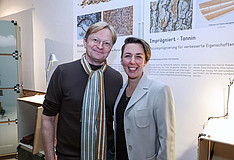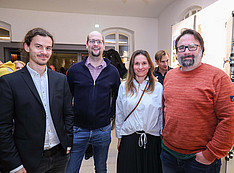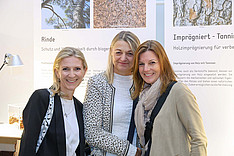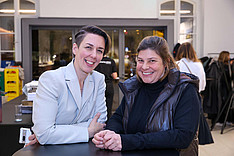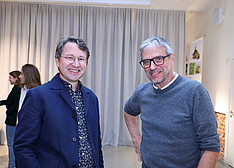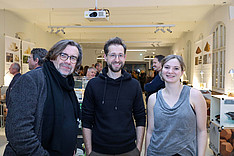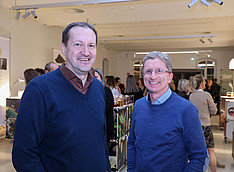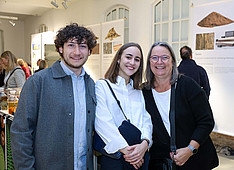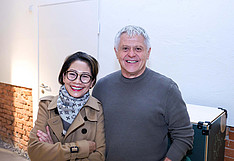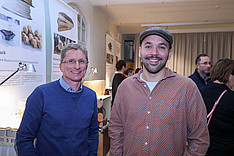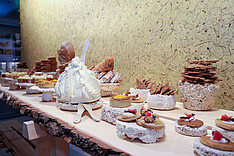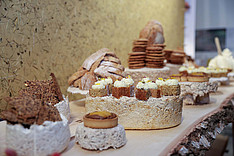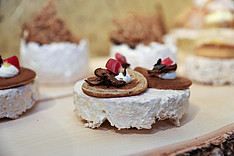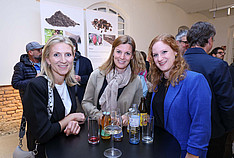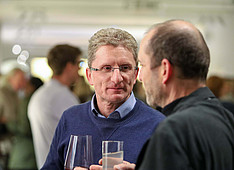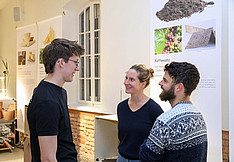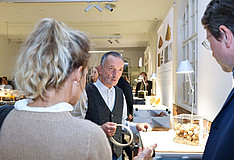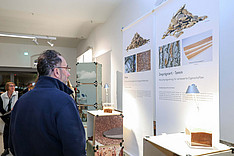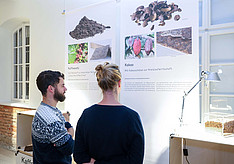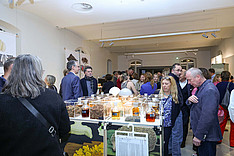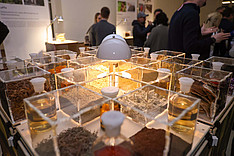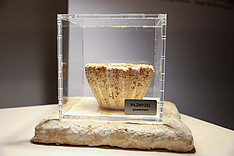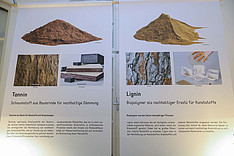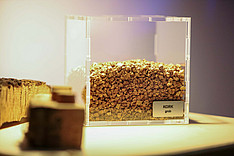The exhibition ‘Circular Materials - raw material or waste material?’ at the Architekturhaus Salzburg focuses on the great potential of natural resources. Specific examples show how the ‘material cycle’ can be closed and sustainable production made possible. The exhibition by the Department of Design & Green Engineering at Salzburg University of Applied Sciences, which opened on 14 November, will be on display until February 2025.
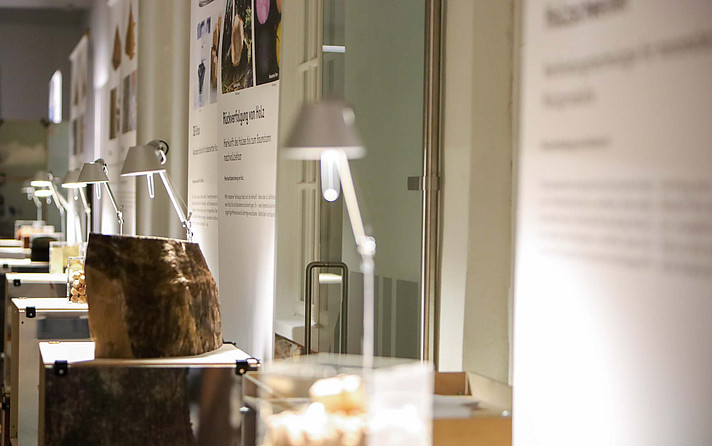
The Expo at the Architekturhaus Salzburg presents innovative approaches to creating sustainable material cycles. Materials that today often have to be thermally utilised or even disposed of at high cost are used as the basis for new, circular materials and products. The focus is on the responsible utilisation of natural resources, which are fed back into the material cycle using advanced technologies.
‘With the applicable research, we are moving from the laboratory at the Campus Kuchl towards the exhibition at the Initiative Architektur. The results are intended to inspire, inform and motivate the transformation of product and building culture towards circular material cycles,' explains Michael Ebner, Head of Academic Area Furniture & Interior Design at the Kuchl Campus and curator of the exhibition.
In addition to wood as a well-known regional resource, numerous other raw and residual materials from the agricultural and forestry sectors are also featured in the exhibition. These include materials such as straw, mallow, bark, cellulose, spent grains and extractives such as tannin, lignin, oils, waxes, casein, starch and fungi. ‘It's not about asceticism and renunciation, but about enthusiasm and the start of a future worth living,’ emphasises Ebner.
Residual materials as a valuable resource

Roman Höllbacher, Artistic Director of the Initiative Architektur, emphasises: ‘Using existing resources responsibly is more than ever the imperative of our time. We can't pretend that we don't know that this planet only exists once and that its resources are finite. The ‘circular materials’ exhibition is based on these facts and provides insights into current research projects and results from the University of Applied Sciences in Salzburg, which deal with nature in various aspects.’
Residual materials are still carelessly thrown away. In materials research, they are now being discovered as valuable resources. At the same time, the aim is to develop material and economic cycles that replace one-dimensional discarding with a circular economy. Höllbacher: ‘Research is one part of the transformation that we as a society are in the midst of. The other is the behaviour of the people themselves. With the exhibition, we want to show examples of how moving towards a circular economy doesn't hurt us all, but is good for us and our planet.’
Innovative approaches, lectures and workshops
The exhibition also offers the general public exciting insights into the future of sustainable materials. Visitors are invited to experience the innovative approaches at first hand and learn more about the challenges and opportunities of a circular economy.
Lectures and workshops will also be held as part of the exhibition: The topics range from 3D printing with bio-based materials, the use of tree bark in the insulation of buildings to innovative material development.
Opening of the ‘Circular Materials’ exhibition
Numerous guests from the worlds of art, architecture, culture, design, research and business celebrated the opening of the ‘Circular Materials’ exhibition on 14 November 2024. Barbara Gollackner and Bernadette Wörndl spoilt the guests with culinary highlights and surprised them with tableware made from mushroom mycelium.
‘Discovering innovations and inspiration for a circular future’ is the motto of the exhibition at the Architekturhaus Salzburg. The exhibition is a cooperation between the Architecture Initiative and the Salzburg University of Applied Sciences, Department of Design & Green Engineering at the Kuchl campus. Pictures: © FH Salzburg/Neumayr

